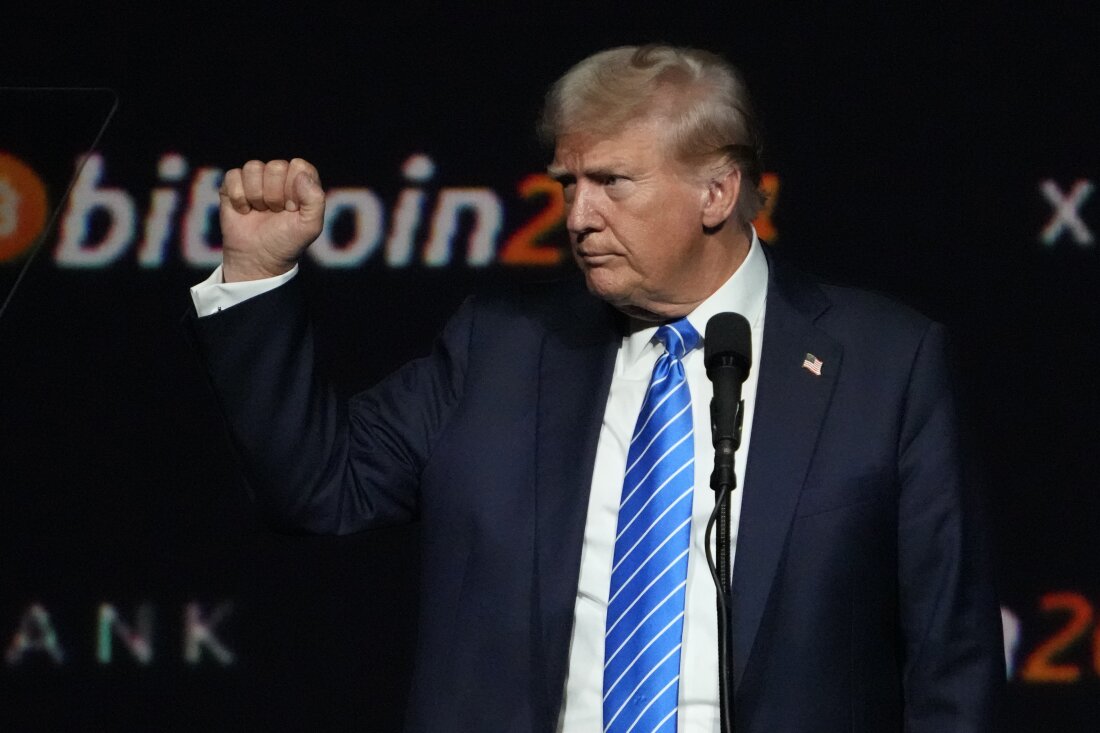Trump’s Crypto Crusade: Leading the Charge or Just Hot Air?
As the world of cryptocurrency continues to evolve, political figures are increasingly looking to align themselves with this burgeoning industry. One of the most surprising advocates has been Donald J. Trump, who recently made headlines with a proclamation on social media: “I am very positive and open-minded to cryptocurrency companies and all things related to this new and burgeoning industry.” This came just a few days after he became the first major U.S. presidential candidate to accept cryptocurrency donations. Is this a genuine embrace of technology, or a calculated move to attract a burgeoning voter base?
The intersection of politics and crypto is becoming more pronounced.
Trump’s Shift Towards Crypto
Ahead of his recent address at the Libertarian National Convention, Trump’s statements highlighted a nuanced shift towards cryptocurrency. His post on Truth Social proclaimed, “Our country must be the leader in the field; there is no second place.” This sentiment seems aimed at pro-crypto voters, particularly as the political landscape sees candidates vying for an enthusiastic and passionate demographic.
In a pointed jab at President Biden, Trump continued, “Crooked Joe Biden, on the other hand, the worst president in the history of our country, wants it to die a slow and painful death.” Such rhetoric not only seeks to galvanize his supporters but also galvanizes a growing contingent of voters convinced that the future of finances lies in cryptocurrencies.
The Regulatory Landscape
Trump’s pro-crypto statements are particularly interesting given the shifting tone from the Biden administration. Just recently, the White House expressed its opposition to a crypto market structure bill that aims to provide clearer regulations for digital currencies. The fact that the administration refrained from issuing a veto suggest a softening stance amidst growing support for crypto regulation. Simultaneously, the Securities and Exchange Commission (SEC) approved key regulatory filings for ether ETFs, marking a significant step for legitimizing digital assets.
This changing landscape not only reflects the increasing normalization of cryptocurrencies in American finance but also hints at a potential bipartisan recognition of their importance. It raises essential questions about economic policy, regulation, and the future of finance.
Bitcoin: The New Gold?
Meanwhile, the allure of Bitcoin (BTC) remains unyielding. With a market cap hovering around $1.3 trillion, Bitcoin continues to capture the imagination of both retail and institutional investors. But is it still a good time to invest? Analysts argue that three critical factors justify maintaining or expanding investment in Bitcoin at this juncture.
Fixed Supply
Bitcoin’s most alluring feature is its capped supply of 21 million coins. This stability is a stark contrast to fiat currencies, which can be printed at will by central banks. Over time, this scarcity has created a paradox where Bitcoin’s inflation decreases with each halving event—an occurrence that cuts the block subsidy given to miners by half. This inherently designed scarcity has led many proponents to view Bitcoin as a hedge against inflation.
Regulatory Approval and Market Structures
Most notably, the introduction of spot Bitcoin ETFs has brought a wave of institutional interest and credibility into the market. The ease of access to Bitcoin through traditional brokerage accounts removes significant barriers for potential investors. According to reports, there have been significant inflows into Bitcoin ETFs, affirming that institutional players are beginning to realize the potential of Bitcoin as a serious asset class. As noted, “the hope is that more capital flows to the asset,” indicating a growing consensus about Bitcoin’s value.
Charting the rise of Bitcoin in the current market.
Expanding Infrastructure
Bitcoin’s relatively young ecosystem—approximately 15 years old—continues to mature and expand. As technological infrastructures evolve, companies across sectors are finding innovative ways to integrate Bitcoin into their businesses. The trend towards mainstream adoption is underscored by various start-ups focused on improving utility, convenience, and safety for users. This parallels the U.S.’s own transition into a digital economy, where seamless financial transactions will become paramount.
Price Predictions and Analyst Expectations
In light of all these factors, many analysts are bullish about Bitcoin’s future. Experts like Tom Lee suggest that the cumulative effects of ETF approval, reduced supply through halving events, and generally easing monetary policies could catapult Bitcoin’s price dramatically over the next few years. Analysts have placed optimistic price targets on Bitcoin, foreseeing astonishing growth.
- Tom Lee predicts Bitcoin could soar to $150,000 by 2025.
- Cathie Wood, CEO of Ark Invest, projects prices upwards of $3.8 million based on growing institutional adoption, reflecting a staggering 5,480% upside.
These projections highlight not just hope but a belief among knowledgeable investors that Bitcoin may fundamentally redefine wealth in the years to come.
Conclusion: A Coin with Two Sides
As the political and financial landscapes intersect, the recent behavior of figures like Trump signifies a historic recognition of cryptocurrency’s potential. While this may resonate with some voters, it also brings forth an array of challenges, particularly in terms of regulatory frameworks, market stabilization, and genuine adoption.
In essence, Bitcoin and the broader cryptocurrency environment represents a microcosm of modern finance’s evolution. As we stand on the cusp of what could be a seismic shift in how we perceive value, one question remains: will Bitcoin truly become the future of currency, or is it merely a fad reflecting our times? As analysts suggest, every potential investor should remain judicious, examining both the risks and the boundless possibilities that Bitcoin represents.















